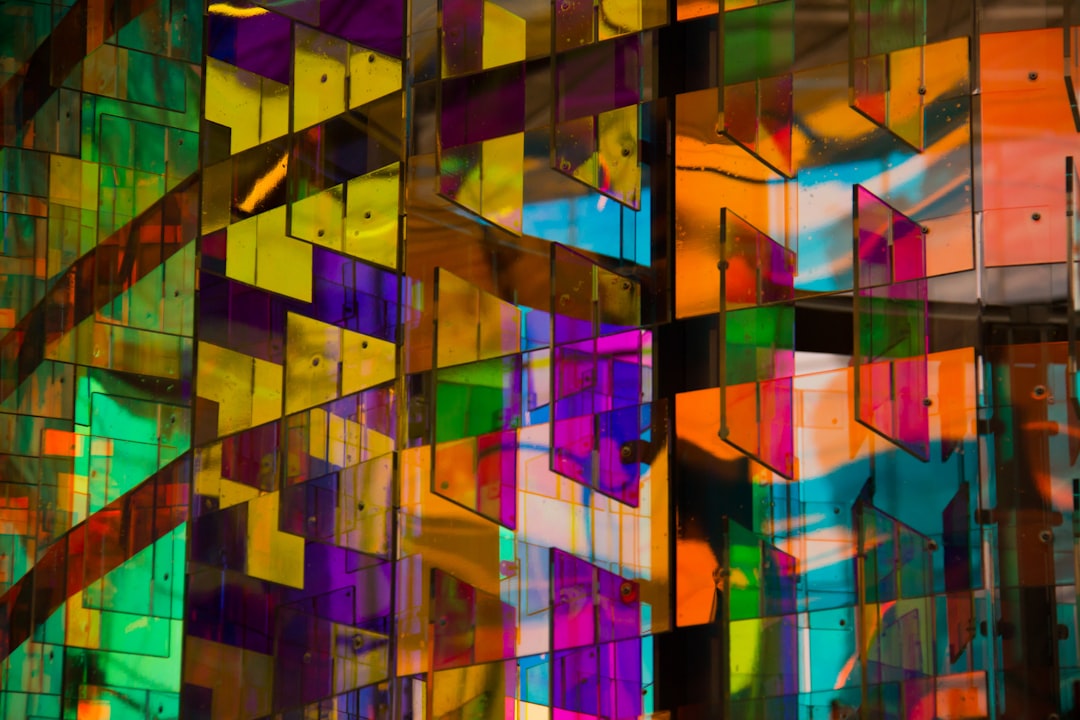Restoring Color Counteracts Digital Misinformation
Restoring Color Counteracts Digital Misinformation - How Adding Hue Can Deepen Historical Engagement
The ongoing discourse surrounding how color can enhance our engagement with historical events has seen considerable evolution by mid-2025. While the capacity of added hue to vividly connect audiences with the past remains a central point, newer discussions now critically examine the ethical implications and potential pitfalls alongside its benefits. This evolving dialogue includes scrutiny of advanced techniques for applying color, questioning how these methods truly contribute to, or potentially distort, a nuanced historical understanding, particularly in an era rife with digital inaccuracies. It prompts a deeper reflection on the responsible integration of color to genuinely stimulate critical thinking rather than simply generate visual interest.
Examining the interplay between visual perception and historical immersion, it's intriguing to consider how the introduction of accurate chromatic information might reconfigure our engagement with the past, as of July 10, 2025. Here are some observations from a research perspective on how incorporating color can deepen historical engagement:
1. Preliminary analyses suggest that our brains may process color-rich visual information with greater intrinsic efficiency compared to monochrome. This could potentially reduce the cognitive load associated with image interpretation, theoretically allowing for more mental resources to be directed towards understanding the nuanced contextual elements within historical scenes. This optimized processing might facilitate a more comprehensive grasp of events and improve how historical information is assimilated and retained.
2. When presented with thoughtfully colorized historical images, anecdotal evidence and some early neuroimaging studies indicate a stronger activation of brain regions associated with emotional processing. This increased affective response could foster a heightened sense of empathy and a perceived immediacy with historical figures and circumstances. While this emotional connection can undoubtedly make historical narratives feel more personally impactful, it's worth exploring the precise nature of these evoked emotions and their potential influence on objective interpretation.
3. From a signal processing standpoint, the human visual system's superior ability to differentiate subtle chromatic variations over mere luminance differences across various visual contexts is notable. This intrinsic capability implies that accurate colorization can reveal fine historical details, inherent material textures, and specific environmental properties that often remain obscure or ambiguous in their monochrome counterparts. This enhanced sensory input could potentially lead to a more granular understanding of historical artifacts and their settings.
4. Exploring the neurocognitive underpinnings, there’s an ongoing hypothesis that engaging with precisely colorized historical imagery might stimulate distinct neural pathways linked to episodic memory formation and narrative construction. Should this prove consistent, it could imply a more robust encoding and subsequent retrieval of historical context. This suggests a potential neurocognitive advantage for the active learning and reconstruction of historical narratives through such visual augmentation.
5. Observing the psychological impact, the addition of accurate color to historical imagery often appears to subjectively diminish the perceived temporal distance to past events. They can feel less abstract and more grounded in a tangible, relatable reality. This phenomenon, if consistently replicated, points to a deeper sense of immediacy and personal connection to historical narratives, although the extent to which this perceived closeness accurately reflects historical distance remains a fascinating area for continued study.
Restoring Color Counteracts Digital Misinformation - AI's Interpretations Fact Versus Algorithmic Guesswork
While the application of artificial intelligence in historical image colorization has been a subject of ongoing discussion, a new emphasis has emerged by mid-2025 on understanding the inherent nature of AI's "interpretations" versus its underlying "algorithmic guesswork." No longer just about simple color matching, the latest AI models often generate highly complex and context-aware chromatic information. The crucial question now centers on whether these advanced algorithms are genuinely deducing historical chromatic accuracy or are, in effect, creating plausible fictions based on learned statistical probabilities. The opaque nature of these deep learning processes means that errors or assumptions embedded within the colorization can be subtle and deeply integrated, making it challenging to differentiate true historical representation from a convincing computational fabrication. This necessitates a heightened critical awareness of how computational interpretations shape historical narratives.
1. The core mechanism of AI-driven colorization, as of mid-2025, remains rooted in probabilistic modeling. These systems extrapolate color values for monochrome pixels by analyzing vast, pre-trained datasets for statistical likelihoods. Therefore, what an AI "interprets" as a color is fundamentally a statistically derived estimate, not an ascertained historical truth.
2. Despite advancements, current AI paradigms employed for colorizing historical imagery lack a genuine, semantic comprehension of the depicted objects, scenes, or their historical context. Their color assignments are based purely on correlating learned pixel patterns and luminance information, devoid of any actual knowledge regarding the era or subject matter.
3. A significant concern arises from the inherent susceptibility of algorithmic guesswork to amplify biases present in its training data. If certain color-object pairings are disproportionately represented during the learning phase, the AI will predictably default to these biased color assumptions, potentially embedding and propagating historical inaccuracies across wide visual interpretations.
4. While contemporary generative AI excels at crafting visually convincing imagery, it frequently demonstrates a capacity to "hallucinate"—that is, invent—colors or textures that were entirely absent from the original historical content. This phenomenon blurs the critical distinction between an algorithm's statistical estimation and the outright fabrication of visual historical elements.
5. The intricate, often opaque nature of complex deep learning architectures poses a substantial challenge. Pinpointing the precise rationale behind an AI's specific color choice for a historical detail proves exceedingly difficult. This "black box" characteristic complicates efforts for researchers and historians to reliably differentiate between a truly plausible interpretation and an arbitrary, unverified algorithmic guess.
Restoring Color Counteracts Digital Misinformation - Debates over Authenticity The Perils of Artistic License
By mid-2025, the ongoing discussions surrounding colorization's role in historical understanding have shifted, particularly regarding "Debates over Authenticity The Perils of Artistic License". While the technical nuances of algorithmic color assignment continue to be rigorously examined, a heightened focus has emerged on the human element: the deliberate, often aesthetic, choices encompassed by "artistic license" in the colorization process. This intensified scrutiny aims to identify precisely where creative interpretation might inadvertently diverge from historical evidence, underscoring the critical need to distinguish between mere visual enhancement and a potential re-imagining of the past. The central challenge now involves defining the boundaries of such license, ensuring that visual appeal does not subtly displace factual integrity.
Studies in how we retain visual information indicate that when historical visuals are reimagined with artistic freedom, particularly through vivid, yet factually divergent, chromatic choices, these compelling renderings can solidify themselves in our minds. This often leads to a subtle displacement or alteration of previously acquired, more precise mental representations of those events. It underscores a notable susceptibility in human recall, where highly engaging visual input, even when conceptually embellished, can inadvertently reshape our factual memory landscape.
Our perceptual systems appear to be remarkably sensitive to visual information that falls just short of factual fidelity. When artistic interpretations introduce subtle deviations from verifiable historical details, this can paradoxically elicit a stronger sense of cognitive friction or unease than a clearly stylized or abstract re-imagining. This suggests that artistic license, when it closely approximates but doesn't perfectly align with reality, may inadvertently foster a heightened skepticism regarding the image's inherent truthfulness.
Early neuroimaging investigations propose that the act of observing intentional artistic modifications within historical imagery may activate distinct neural pathways. Rather than solely engaging regions associated with aesthetic appreciation, these alterations seem to trigger networks involved in detecting incongruity or deviation. This implies a potential neural processing mechanism where artistic license, when applied to historical visual data, is processed as a departure from anticipated factual representation, rather than purely as an artistic flourish.
Artistic embellishments in historical visuals, even those lacking a basis in fact but possessing strong visual impact, have been observed to subtly reorient viewers' causal inferences. This can lead to the perception of different relationships or motivations behind historical occurrences, based on the newly introduced visual elements. This phenomenon demonstrates how compelling, yet non-factual, chromatic or stylistic additions can reshape the perceived dynamics and narrative structures of the past within an observer's understanding.
There is observable evidence that repeated exposure to historical images incorporating artistic license can demonstrably embed these visual alterations into a viewer’s long-term historical schema. This process increasingly complicates the differentiation between what is factually accurate and what constitutes creative embellishment over time. This illustrates a profound concern for the enduring integrity and accuracy of learned historical understanding.
Restoring Color Counteracts Digital Misinformation - The Evolving Landscape of Visual Historical Truths
As of July 2025, the notion of "visual historical truth" faces an unprecedented level of scrutiny, evolving beyond a simple discussion of accuracy to encompass a complex interplay of digital enhancements and interpretive choices. The landscape is marked by a deepening awareness that while technologies like colorization aim to bridge the temporal gap, they concurrently introduce intricate ethical dilemmas. What is truly new is the escalating challenge in distinguishing meticulously reconstructed historical visuals from those subtly shaped by algorithmic assumptions or creative liberties. This calls for a refined public literacy regarding visual media, as the very methods designed to counter misinformation in the digital realm can inadvertently complicate our perception of the past.
Our observations in visual cognitive processing suggest a persistent human tendency to inherently trust photographic imagery more readily than written accounts. This ingrained bias means that even minor alterations to historical visuals can exert significant influence, fundamentally shaping personal convictions about past events. As engineers, this underscores the imperative for developing and promoting more robust critical evaluation frameworks for digital historical content.
Preliminary neuroscientific investigations, employing methods like functional MRI, point to a fascinating challenge: our brain's dedicated reality monitoring systems often struggle to identify subtle, expertly crafted digital manipulations within historical photographs. These neural networks, typically responsible for flagging inconsistencies, appear to be susceptible to sophisticated forgeries, indicating a potential biological constraint on our inherent capacity to distinguish authentic visual historical records from manufactured ones.
The rapid and extensive dissemination of historical images across digital platforms frequently results in their disassociation from crucial original context and metadata. This common phenomenon, often termed "source amnesia," causes individuals to recall the visual content itself while losing vital awareness of its origin, integrity, or any subsequent modifications. Such a decoupling profoundly impedes a precise historical understanding, fostering an environment where decontextualized visuals are inadvertently embraced as factual accounts.
Modern digital restoration methodologies possess the capacity to render historical images with a level of crispness and detail surpassing their initial capture fidelity. This can, somewhat paradoxically, generate a "hyperrealistic" appearance that subjectively enhances a viewer's sense of authenticity, simultaneously masking the intrinsic limitations or original creative decisions embedded in the source material. Such an exaggerated sense of reality risks inadvertently diminishing critical scrutiny of the image's true historical accuracy.
The sheer scale and rapid flow of historical visuals circulating across contemporary digital ecosystems impose a considerable cognitive burden on anyone attempting a diligent assessment of their authenticity. This often compels individuals towards simplified mental heuristics or complete disengagement, rather than thorough verification. This dynamic, unfortunately, contributes significantly to the uninhibited propagation of historically dubious visual narratives.
More Posts from colorizethis.io:
- →7 Essential AI Image Generation Courses for Product Photography Developers in 2024
- →7 Underrated Summer Activities for Boosting Mood and Creativity in 2024
- →Mastering Outer Glow Effects A Step-by-Step Guide for Photoshop Text Enhancement
- →7 Visual Cues to Identify Overcooked Food in Food Photography and How to Fix It
- →7 Historic Wedding Venues in Greenville SC A Photo Colorization Journey Through Time
- →Unveiling the Hidden Colors Why Your Image Appears Grayscale Despite Color Application

